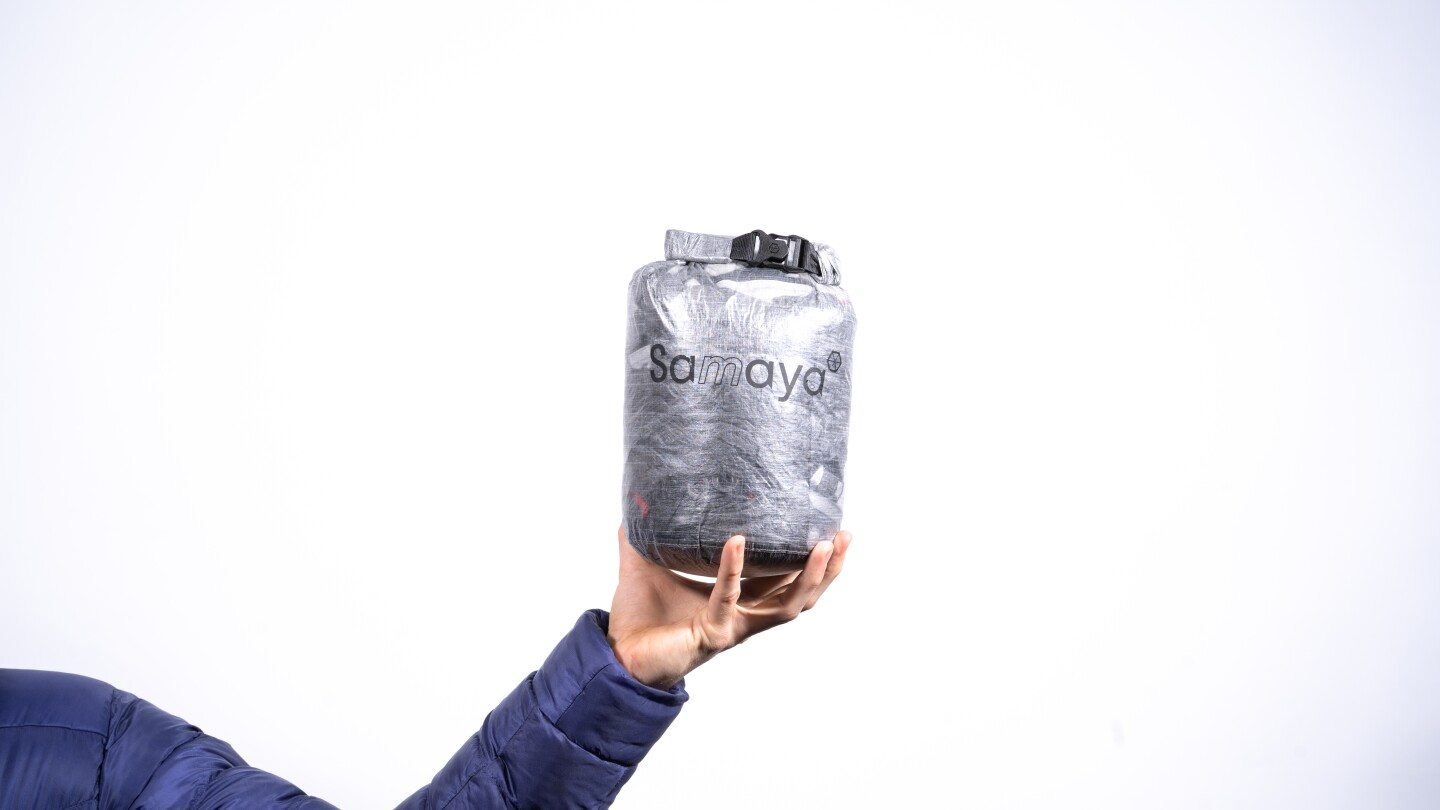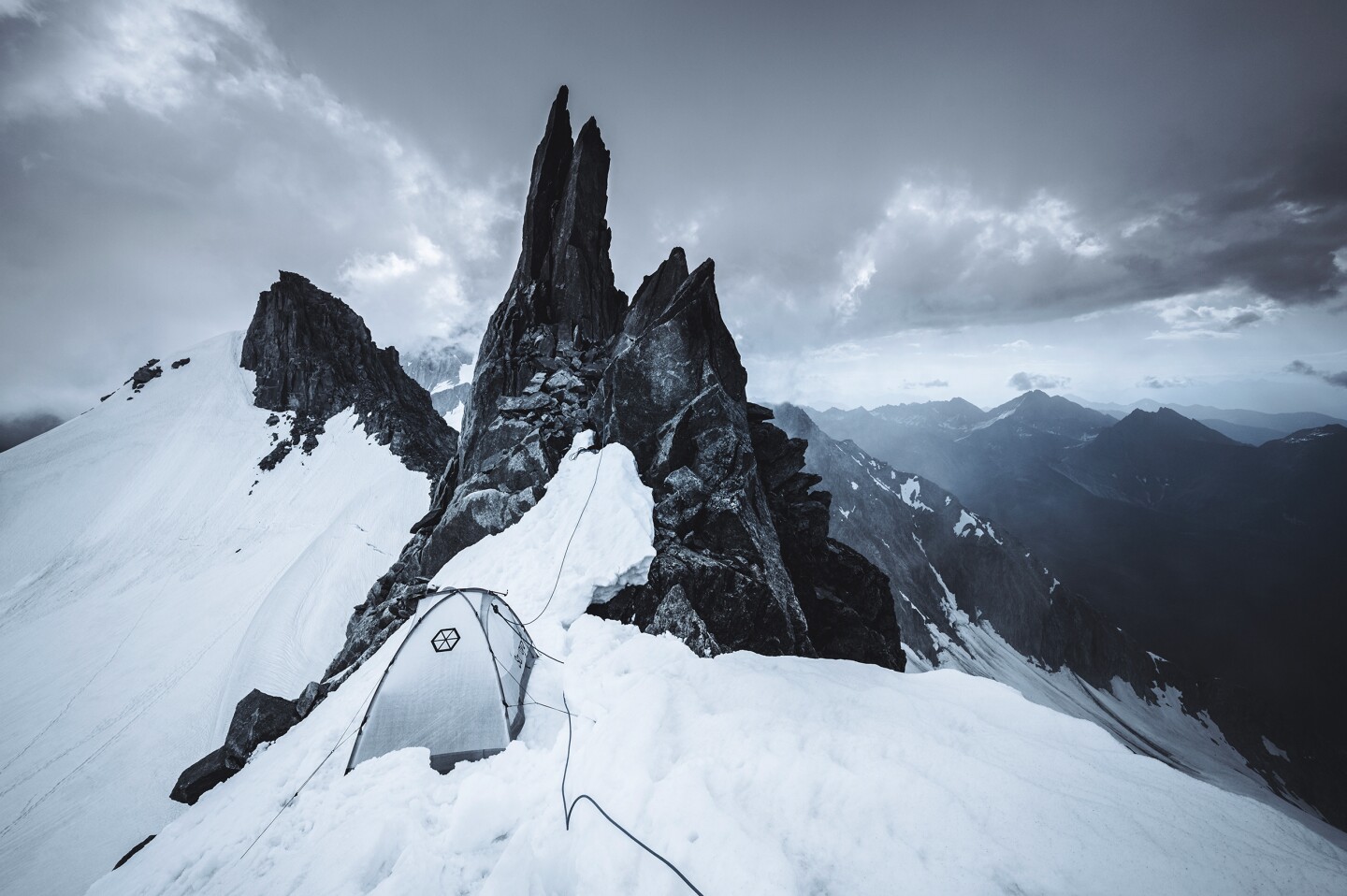Young French company Samaya defines an assault tent as a "tent intended for bivouacs in extreme environments, whose shape allows it to be set up on small mountain ledges or ridges" – much like the picture above. So it clearly didn't build the new Assaut 2 Ultra tent for the type of leisurely warm-weather backpacking trips for which you might expect a tent weighing an even kilogram (2.2 lb) to be designed. Instead, it pulled out all the stops to create an extreme-conditions freestanding tent that leaves behind every gram of bloat while still offering stout weather protection and comfort at the world's highest elevations. It includes a carbon fiber frame, Dyneema fabric all around and a four-figure price tag to match.
Though Samaya is located in Annecy at the base of the Alps, and even refers to its headquarters as "Annecy Base Camp," the company builds its tents and accessories not simply for mere alpinists but for "himalayists," mountaineers who brave the world's most extreme conditions on their way up its highest peaks.
With the all-new Ultra range, Samaya raises the bar a step higher from its existing tents, sparing no expense in creating a line that's ultralight, mobile and robust enough for the world's most treacherous high-alpine conditions.
Samaya has long incorporated Dyneema into select components of its designs, like tent floors and flies, and the Assaut 2 Ultra steps into full-Dyneema territory. Previously known as cuben fiber, Dyneema Composite is valued for its superior strength-to-weight ratio and inherent waterproofness but remains rare in tent construction due to its high price.

The Assaut 2 tent floor is standard Dyneema Composite, and the walls are made from a two-layer laminate that Samaya and Dyneema developed jointly by pairing Dyneema Composite with an expanded polytetrafluoroethylene (ePTFE) membrane. EPTFE is waterproof/breathable material that allows air and other gases to escape (breathability) while preventing water from passing through, the same tech used by longtime waterproof/breathable specialist Gore-Tex.
The Assaut 2 boasts 20,000-mm waterproofing in conjunction with 40,000-g breathability. The latter helps the single-wall tent keep air flowing and prevent the forehead-dripping condensation that might otherwise keep occupants up at night
The fully Dyneema tent body is brought to shape by Easton carbon fiber poles, reinforced at the corners with Cordura, and held to the ground via ultralight, toothed stakes from Swiss Piranha. The guy lines are Dyneema, as is the anchor webbing designed to secure the tent to the mountain and prevent it from sliding clean off in the middle of the night. Even the flap that covers over the AquaGuard water-repellent door zipper relies on Dyneema construction.

With all that Dyneema and carbon, the Assaut 2 Ultra weighs in at just 1.02 kg (2.3 lb) fully packed, which is exceptionally light for any tent, especially a freestanding tent "designed for winter expeditions where the weather conditions are the most extreme." Samaya lists the tent's minimum weight at 995 g (2.2 lb). The tent sleeps up to two people on a 220 x 110-cm (87 x 43-in) floor and rises to a 1-m (3.3-ft) peak height. It packs down to a backpack-able size of 20 x 15 cm (7.9 x 5.9 in).
Such an extreme tent demands extreme testing. After conducting more basic field testing, Samaya sent an Assaut 2 Ultra out with team athletes Symon Welfringer and Pierrick Fine on a fall 2020 expedition. COVID-19 restrictions forced the duo to abandon planned Nepalese climbs, so they turned their sights to Pakistan, the only country in world-topping 7K-m/23K-ft-plus mountain territory to which they could travel. They battled avalanches and long, restless nights dangling off unsuitable bivouacs while ascending 6,953-m (22,811-ft) Sani Pakkush, a summit reached only once prior. They persevered in notching a first ascent up the mountain's South Face, the Assaut 2 Ultra surviving and winning rave reviews from the athletes in the toughness, lightness and usability categories.

The Assaut 2 Urban Ultra launches this month after taking home an ISPO Award at last week's digital ISPO Munich show. As mentioned, its high-end materials do not come cheap, pushing base price to €1,600 (approx. US$1,950) for the tent and €450 ($550) for the optional Dyneema vestibule. A short trip down the line, the Assaut 2 8K has a less-breathable body, DAC aluminum poles in place of carbon, a 1.6-kg (3.5-lb) packed weight and a price tag of €1,300 (US$1,575).
Source: Samaya











